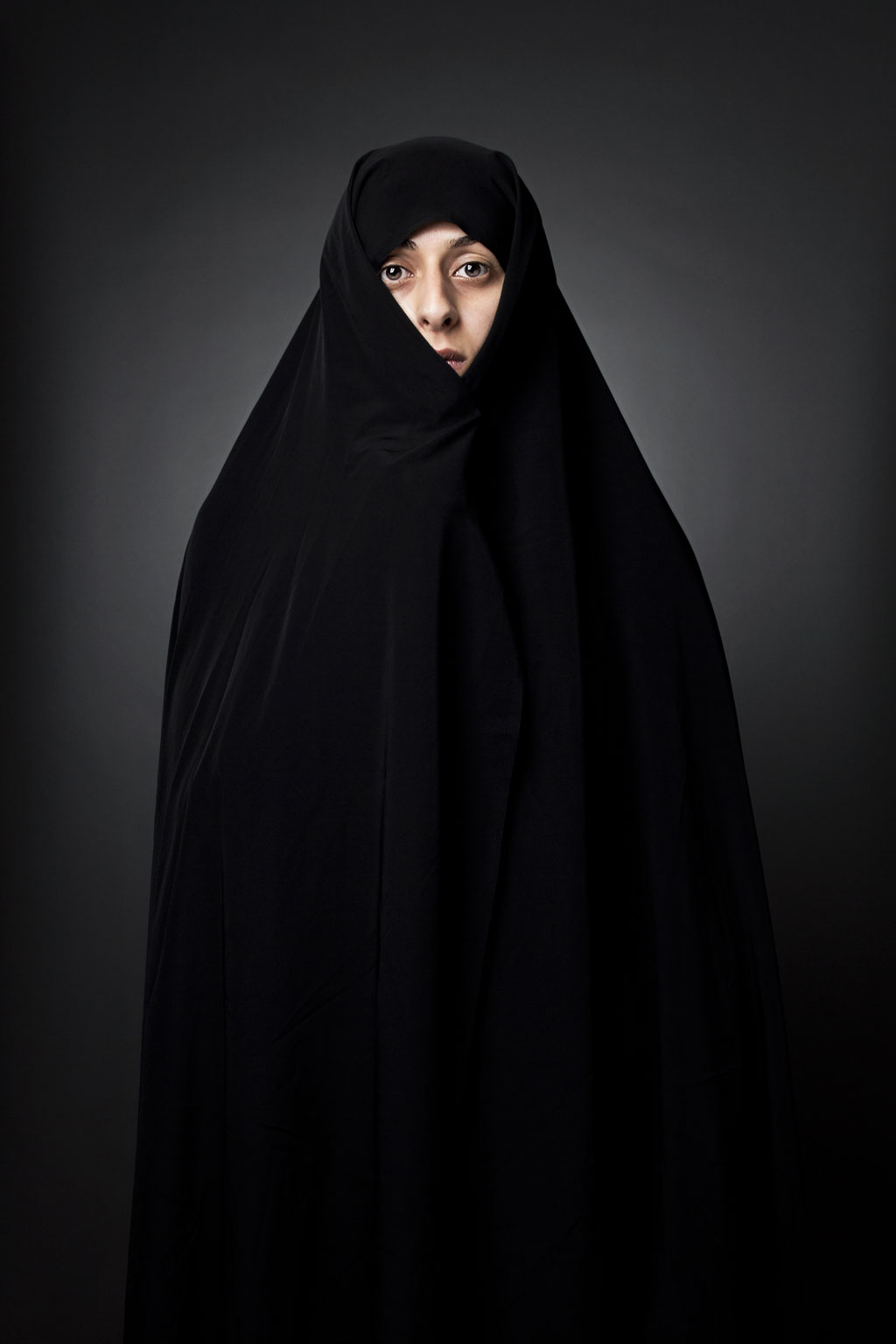
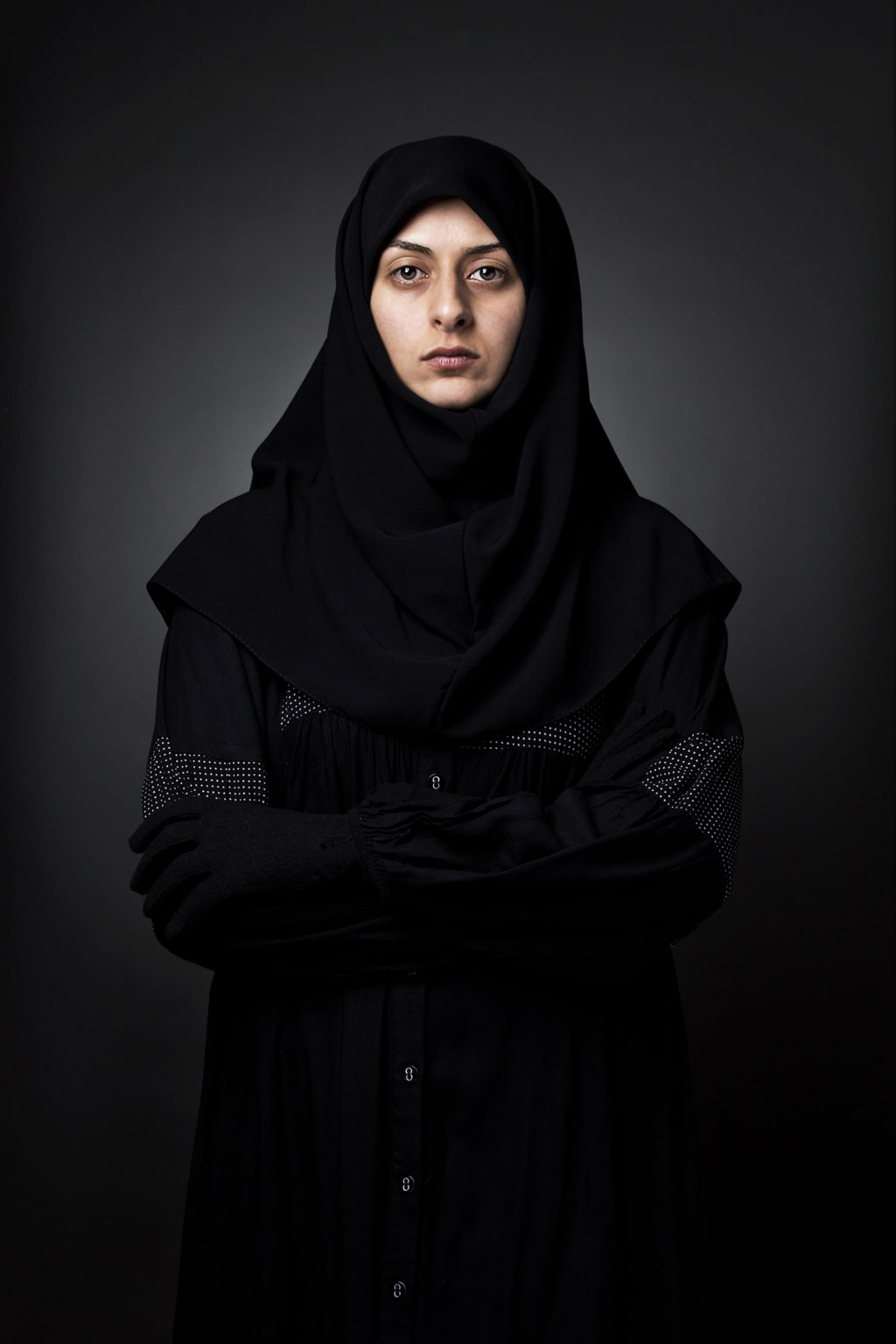
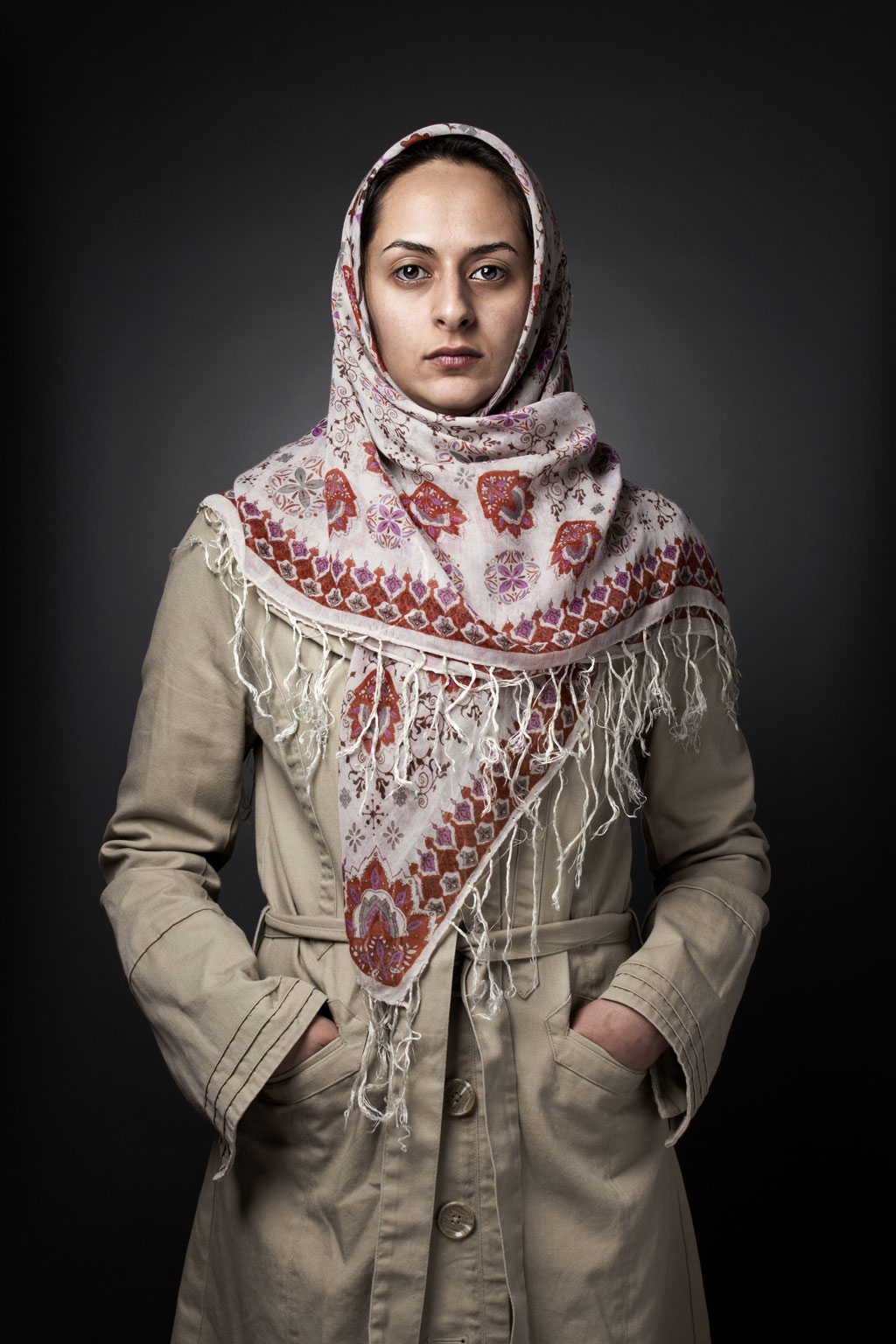
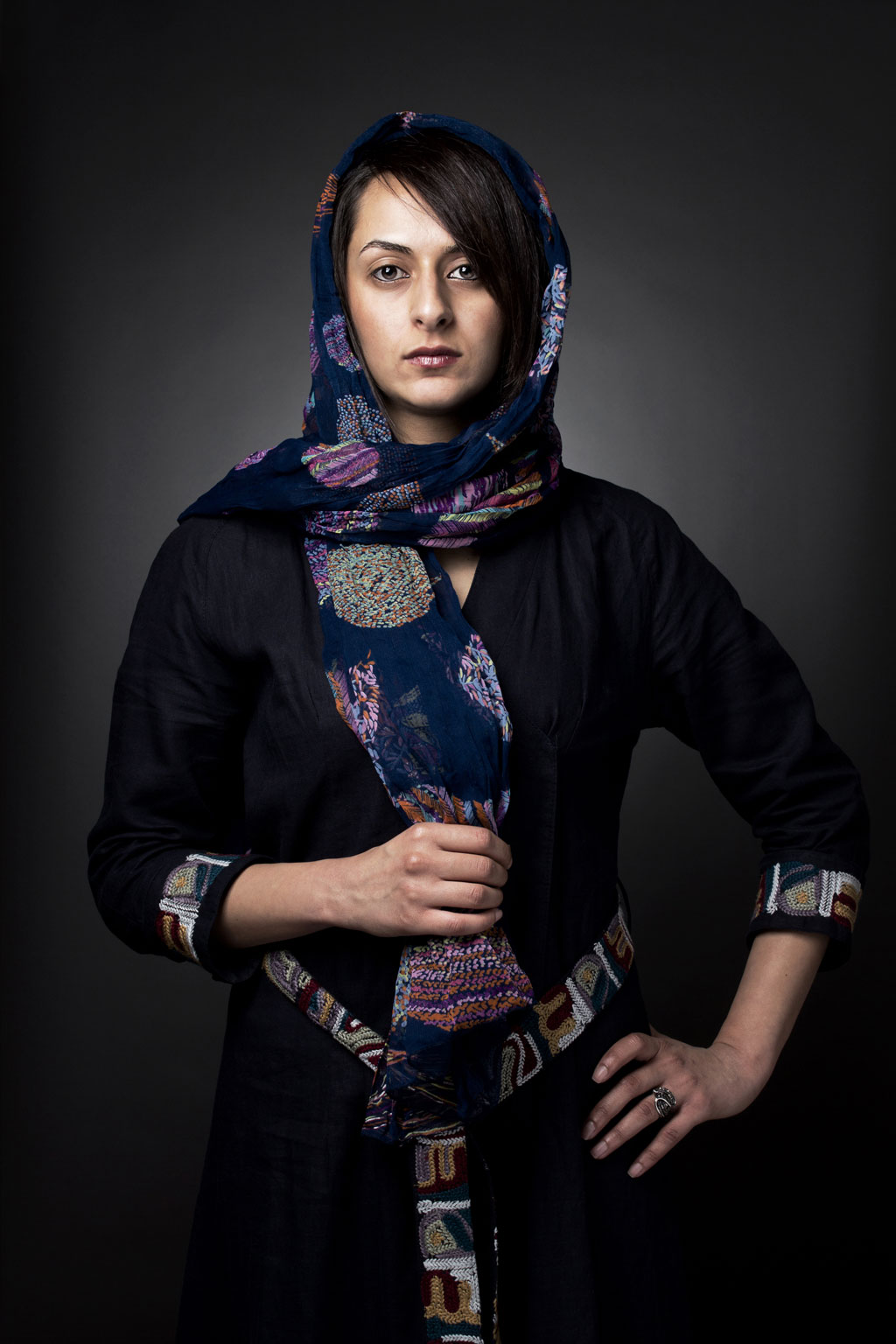
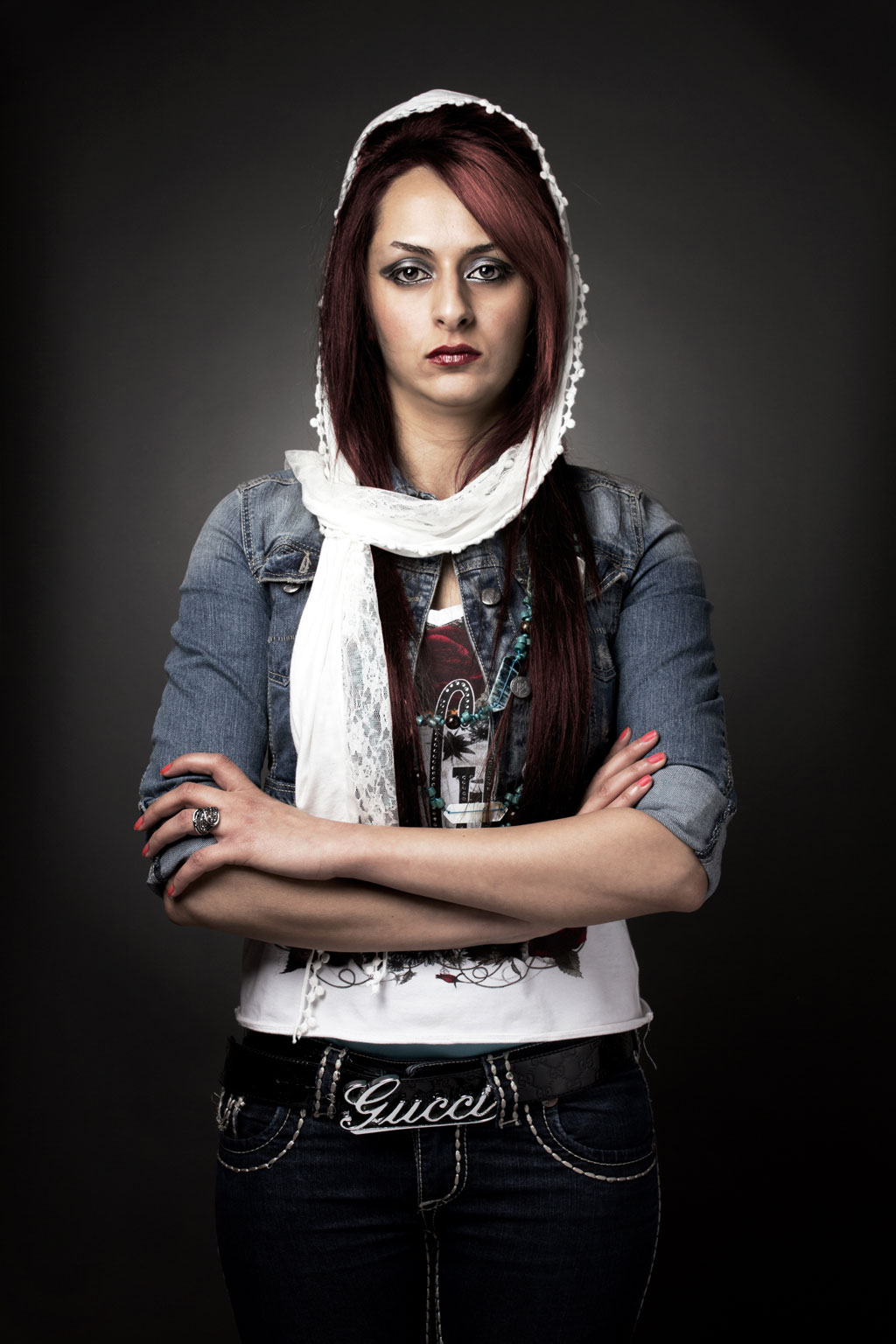
Concept
‘Verhüllung’ (Concealment)
In my collection of images, I wanted to document the concealment of the female body in Iran from the beginnings of the Islamic Republic to the present day. How it was initially fully concealing and by no means emphasised the figure and how women continue to be publicly concealed in the skin-tight, figure-emphasising clothing of today. The development of the Hejab over the last 33 years.
The Hejab is a set or rules officially defined in Iranian law and allows no freedom of choice on the part of women. I grew up in Iran, and have been able to experience and observe the changes that have taken place between the beginnings of the Islamic revolution and today. I was able to observe changes in the style of veiling even among my relatives. At first, many remained hard-liners, or it was typical to wear a completely concealing Tschador (a veil that conceals the body from head to foot), yet as time went by, this style of concealment began to change, even in the older generations. Admittedly, the changes were by no means as drastic as those made by younger women, but they couldn’t be overlooked. In today’s Iran, you can see all, styles of concealment, which is what I wanted to record with my photography.
My collection of photographs documents the ‘dress code’ of women in modern Iran and simultaneously illustrates the chronological changes to the Hejab over the past three decades.
At the same time, my photographs document changes in the perception of religion and traditional ways of life in contemporary Iranian society. The increasing adoption of western-hemisphere lifestyles is also recognisable in women’s clothing today.

